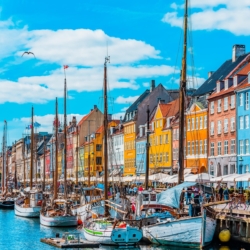 We don’t know what we’re doing. That was what we all learnt about sustainability at last week’s 3 Days of Design in Copenhagen as Denmark’s capital city played host once more to this increasingly influential European Design event. Timed, as it is, in the same week as Chicago’s Neocon, and following on from Milan’s enormous and well-renowned Salone, not even intermittently inclement weather could disguise the noticeably larger audience drawn to Copenhagen this year.
We don’t know what we’re doing. That was what we all learnt about sustainability at last week’s 3 Days of Design in Copenhagen as Denmark’s capital city played host once more to this increasingly influential European Design event. Timed, as it is, in the same week as Chicago’s Neocon, and following on from Milan’s enormous and well-renowned Salone, not even intermittently inclement weather could disguise the noticeably larger audience drawn to Copenhagen this year.
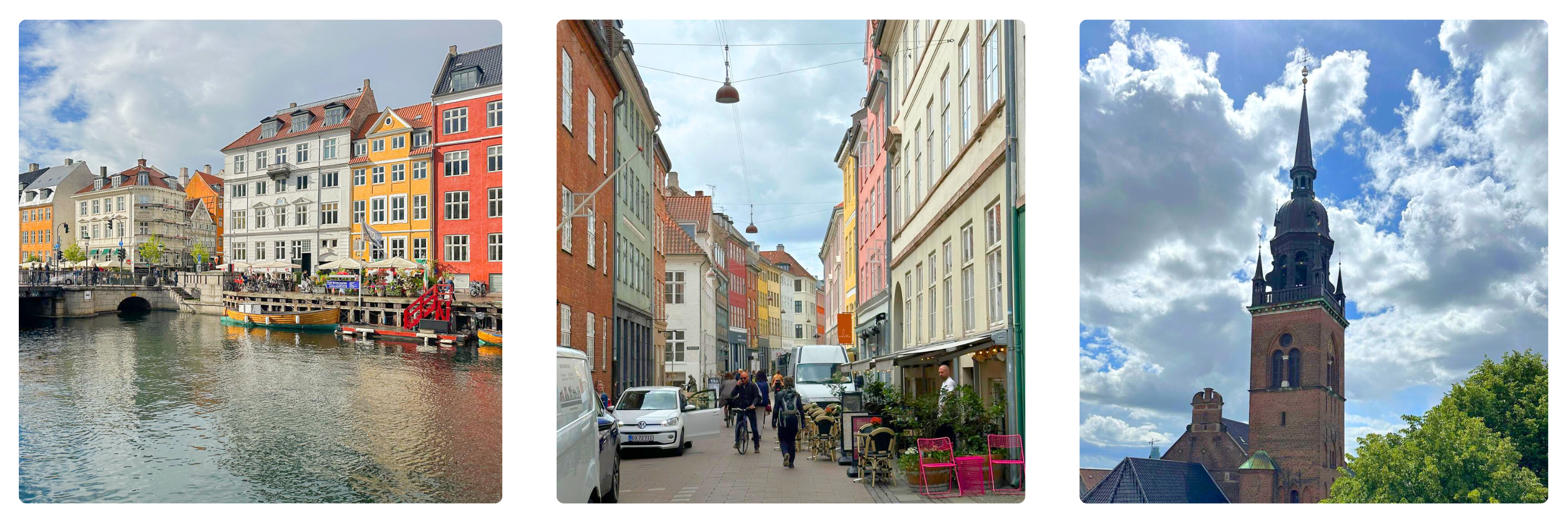
Home to some of the most beautiful cabinet maker designs in the world, Denmark’s leading furniture manufacturers were out in force. Carl Hansen, Normann Copenhagen, Fredericia, Fritz Hansen, Hay and Muuto were just some of the big names opening up their impressive multi-floor show spaces in the centre of the city.
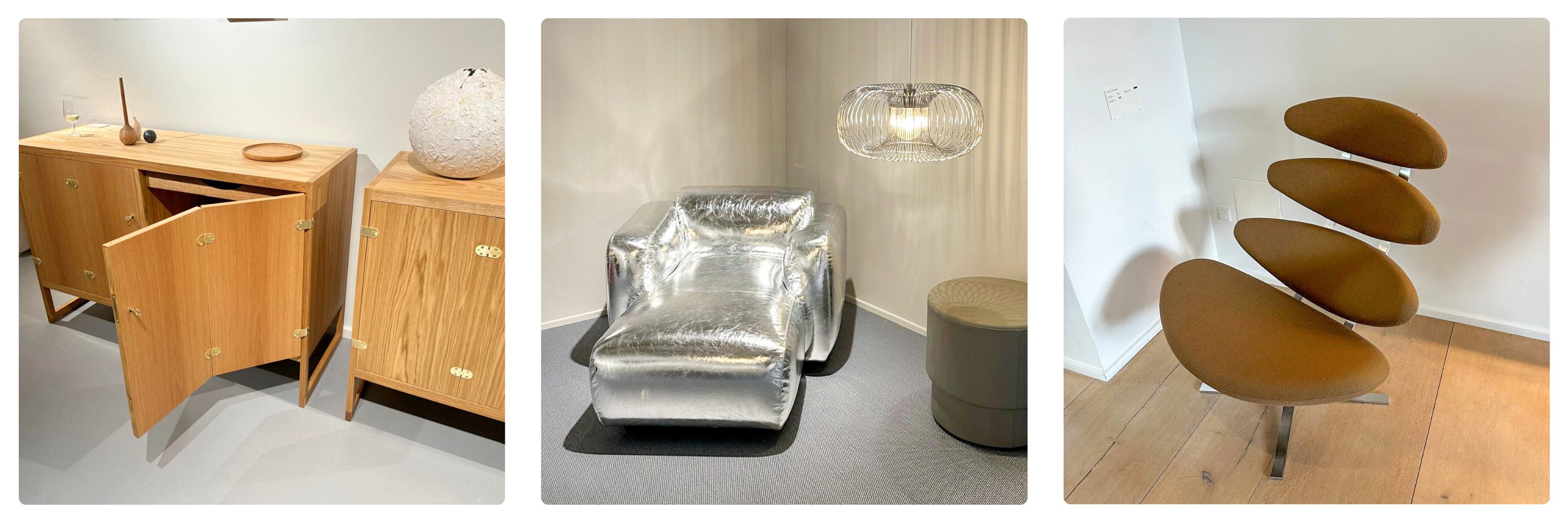
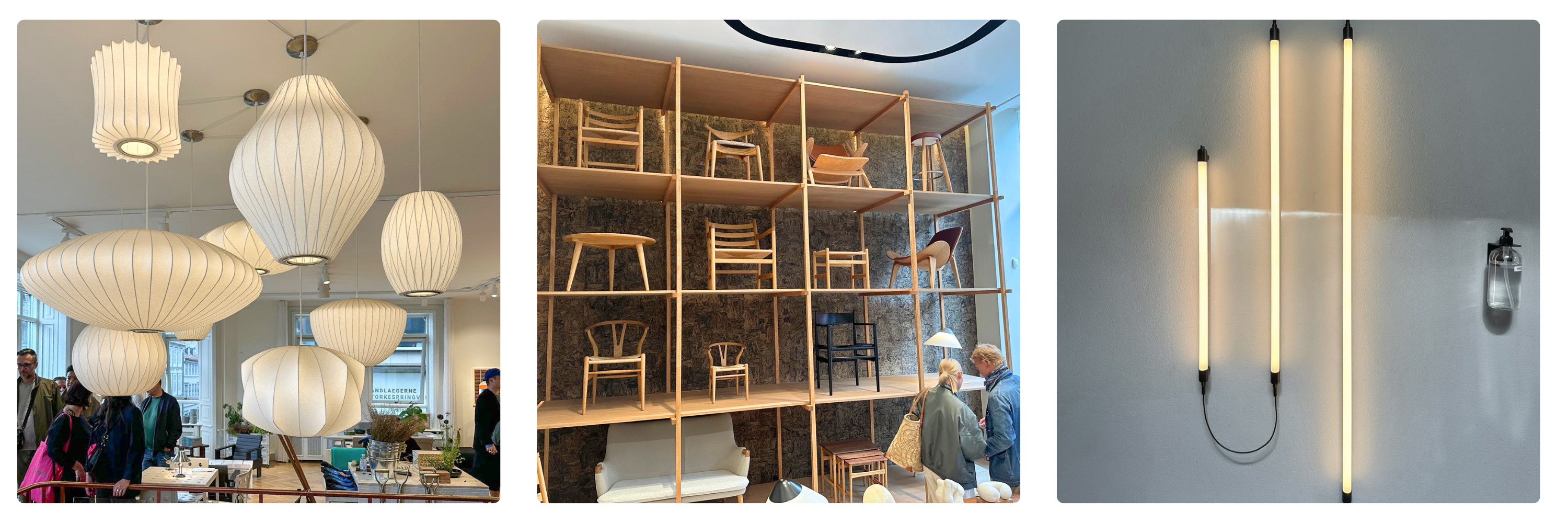
The big theme, as expected, was around Sustainability. Everywhere you went, manufacturers were extolling the ‘sustainable’ nature of their products on offer. Recycled content and post-use recyclability, responsibly sourced materials and flexibility of use were signposted in every display.
In a noticeable departure from last year’s colour everywhere approach, earthy beiges, creams and sand finishes, accented with the odd splash of lavender and pink rose, dominated the many task and sofa seating ranges being shown, and the emphasis once more was on locally sourced materials.
What did we learn?
Often shows like this in the past have felt like the echo chambers one experiences on social media, where you hear only what you want to hear, over and over again, until it becomes your truth. What I enjoyed most about this year’s 3 Days of Design was engaging with those manufacturers who were willing to challenge our norms.
1 – We don’t know what we’re doing
There was a willingness amongst a number of exhibitors to openly admit that we are a long way away from understanding the challenge that furniture production and consumption prompts. Trine Mulvad Steffensen, Muuto’s Sustainability Lead, spoke of Muuto’s aim to reduce their carbon footprint by 50% by 2030. In order to achieve this, and speaking with her you can be fairly confident they will, three main themes came through.
Firstly, this is a target that has come from board level, and her role is to hold that board to account throughout this process. Secondly, the largest part of that footprint revolves around the products they sell. Finally, in order to achieve an ambitious target such as this, they need to start with the data. How can they know what their challenge is without that data?
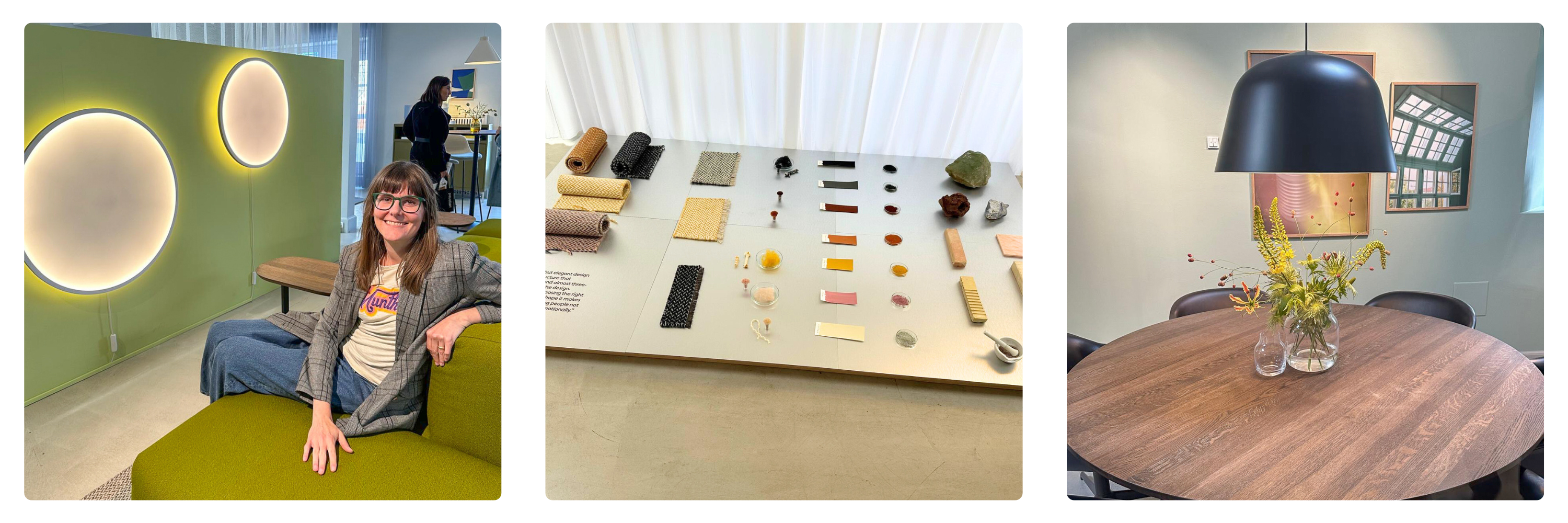
It was one of a number of open conversations with producers and designers accepting that we are on a steep learning curve at the moment, and that this journey has only really just begun.
2 – Sustainable furniture isn’t just about the materials within that product.
While the content of each chair, desk, sofa, pod and shelving unit we saw is an important element of a manufacturer’s commitment to sustainability, many companies are also, quite rightly, emphasising the impact of their production on the wellbeing of their local communities, as well as the modularity and flexibility of the solutions they have provided for their clients.
Eventhough Workplace Wellbeing was less the tagline on everyone’s lips, and biophilia and Pods weren’t as omnipresent as in previous shows, there were positive signs that creating great, relevant places to work, was still a priority as part of a sustainability agenda.
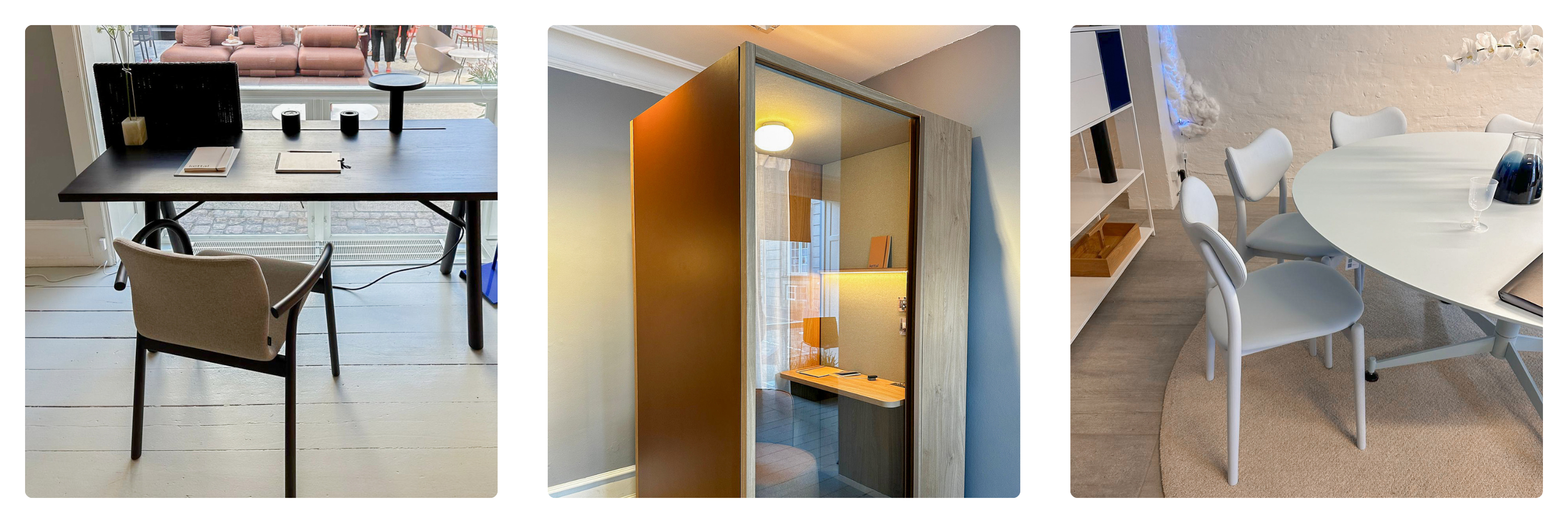
3 – Locally sourced isn’t always best sourced
It makes sense that if you can source the materials for your products close to where you are manufacturing, then you are minimising the environmental impact of the transport of those materials. When we asked Mater, in our opinion one of the most progressive manufacturers in the sustainability field, why they were sourcing Mango wood from India, they explained that this wood was a by-product of mango farming, and provided an extra source of income for the local farmers from what was previously an essentially waste product once the trees had stopped producing fruit. Not only that, but the climate in India ensures that this wood regrows much more quickly than locally sourced trees would, typically within 7-12 years, ensuring a sustainable lifecycle.
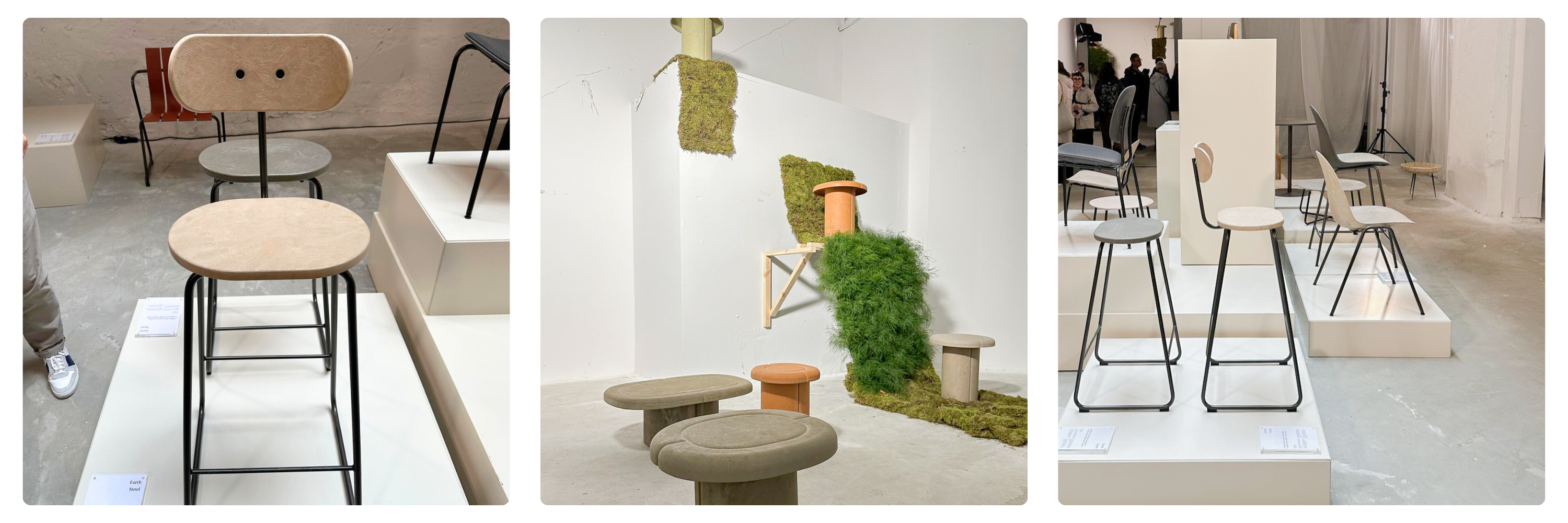
It’s a great example of our previous assumptions being challenged, and also, as a B Corp certified company, it’s great for us at Wellworking to be presented with Mater’s assertion that their Ethical footprint is as important as their Environmental one.
4 – Back to the Future
A number of manufacturers have dived into their archives, and those of other designers, to re-imagine historic designs using today’s materials.
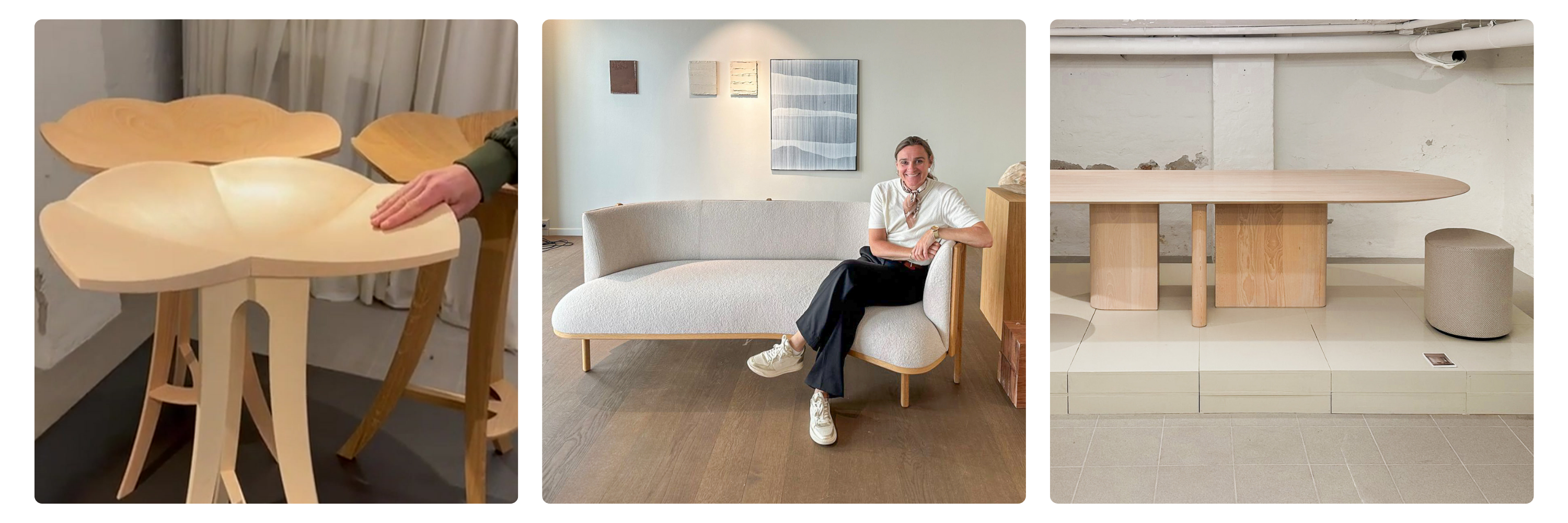
Many of those designs came from a post-war era of scarcity, something that we, as modern consumers, are being encouraged to consider more deeply. A fascinating talk with the uber-talented Rikke Frost, award-winning designer of the Sideways collection for Carl Hansen, revealed why her furniture is almost impossible to sit in without wanting to touch and feel it constantly. That desire to interact with the furniture was a major driver behind her design work. Her feeling is that by making her furniture so tactile, she is encouraging people to subconsciously consider the materials being used.
At a time of easy availability, sustainability to these people is about thinking about the scarcity which may follow.
5 – A brand shared is a brand doubled
Global design leader Vitra shared an event with Kvadrat, and British powerhouse designer Tom Dixon continued his successful collaboration with Danish manufacturer Ege Carpets while also introducing their highly anticipated AW24 collection.
‘Probably the best’ examples of this collaborative approach were at Hay. Their teaming up with Asics on the limited edition Skyhand OG collection sold out within an hour of its day 1 launch, while their similarly limited edition collaboration with Carlsberg, exclusively served at their Thursday evening cocktail party, was put under similar pressure.
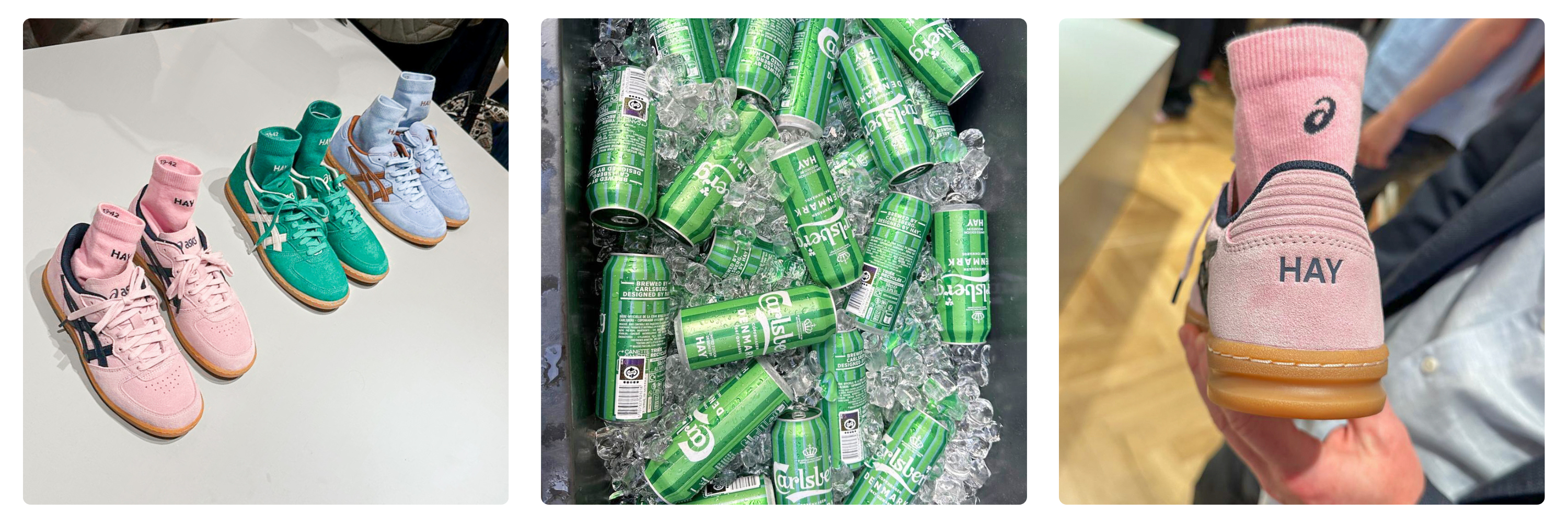
6 – Circularity, and other elephants in the room
Despite circularity being a buzz word throughout the two days, only one or two manufacturers we spoke to were planning refurbishment into the layout of their production facilities.
While Plan A remains manufacturing as much new product as we can sell, the Plan B of what happens when the proportion of product bought that is brand new declines, and it will, was rather shockingly absent from most conversations.
What one producer quite rightly identified was that the refurbishment of existing product needed to take place more locally. As a B Corp which is investing in more and more of our own space to do this for our manufacturing partners, we couldn’t agree more, but it still came as a surprise not to hear about more manufacturers planning for second-life refurbishment.
7 – The exceptions prove the rule
Montana refused to read the neutral colours memo, showing off their usual exceptional colour palette across a wide range of desking, seating and storage pieces.
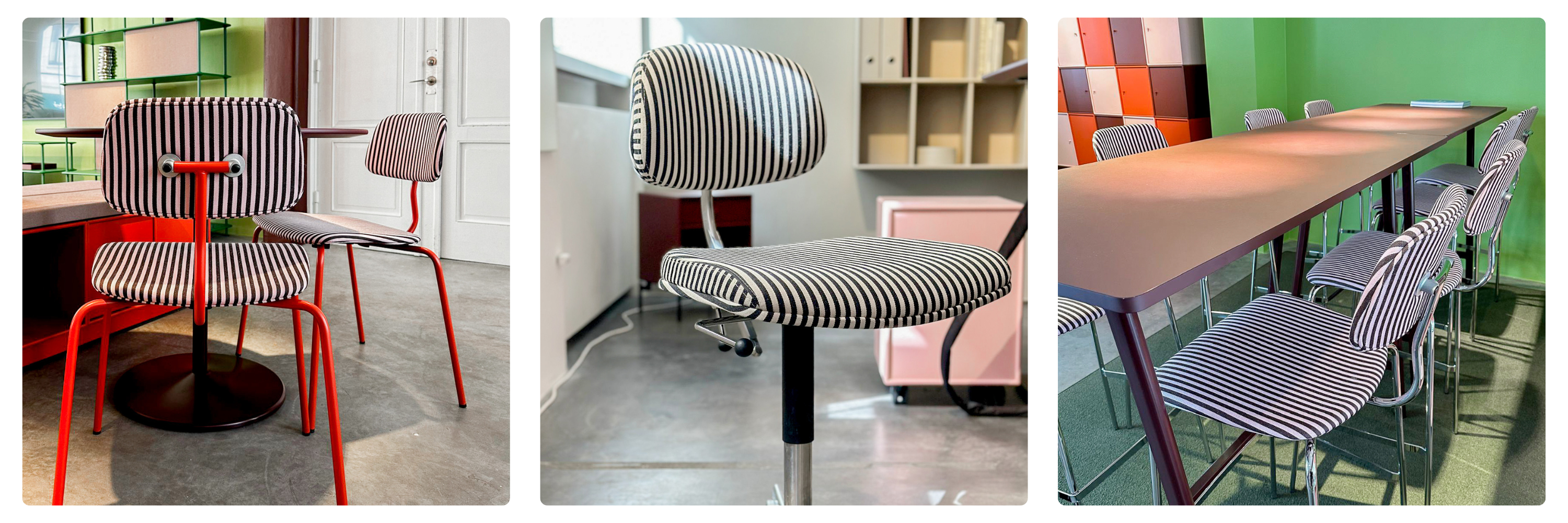
Lintex used their space to put together a thoughtful exhibition focussing on neurodiversity, a growing theme in today’s office wellbeing story. Their curated walk-through, barricaded at many points by red string, came together at the end point to show how a diverse set of ideas, not easily comprehensible individually, could come together to form clarity and purpose.
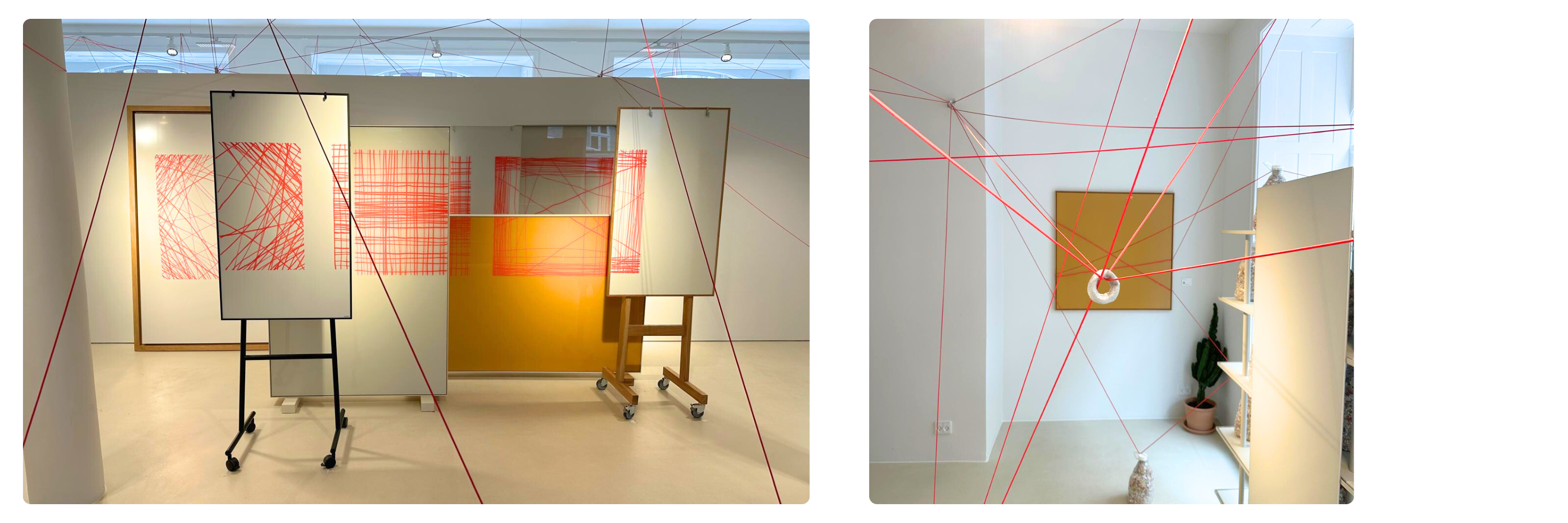
Ironically given the weather recently, it also turns out that outdoors really is the new indoors. There were many wonderful all-weather furniture designs on show, many of which were successful developments of existing classic designs.
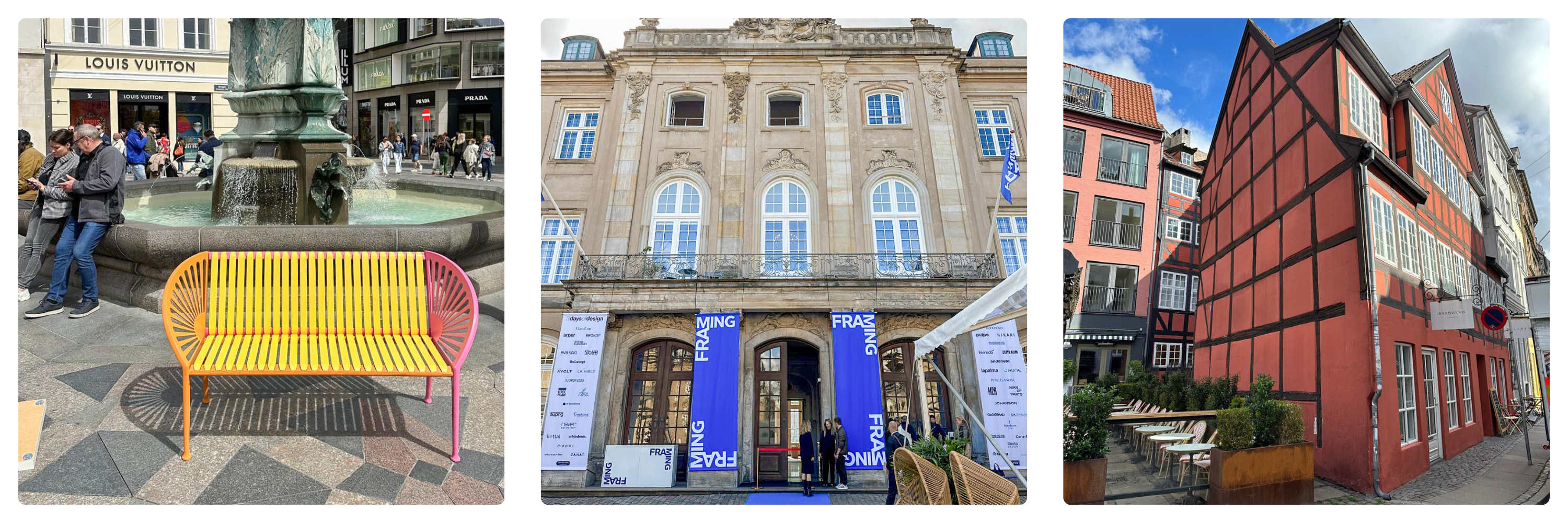
A fascinating few days in this lovely city, with the Danish traits of openness and integrity of design on full display. Traits which are sorely needed if we are to truly understand what sustainability needs to mean for our industry.














July 2, 2024
3 Days of Design proves we don’t know what we’re doing
by Luke Munro • Comment, Environment, Workplace design
Home to some of the most beautiful cabinet maker designs in the world, Denmark’s leading furniture manufacturers were out in force. Carl Hansen, Normann Copenhagen, Fredericia, Fritz Hansen, Hay and Muuto were just some of the big names opening up their impressive multi-floor show spaces in the centre of the city.
The big theme, as expected, was around Sustainability. Everywhere you went, manufacturers were extolling the ‘sustainable’ nature of their products on offer. Recycled content and post-use recyclability, responsibly sourced materials and flexibility of use were signposted in every display.
In a noticeable departure from last year’s colour everywhere approach, earthy beiges, creams and sand finishes, accented with the odd splash of lavender and pink rose, dominated the many task and sofa seating ranges being shown, and the emphasis once more was on locally sourced materials.
What did we learn?
Often shows like this in the past have felt like the echo chambers one experiences on social media, where you hear only what you want to hear, over and over again, until it becomes your truth. What I enjoyed most about this year’s 3 Days of Design was engaging with those manufacturers who were willing to challenge our norms.
1 – We don’t know what we’re doing
There was a willingness amongst a number of exhibitors to openly admit that we are a long way away from understanding the challenge that furniture production and consumption prompts. Trine Mulvad Steffensen, Muuto’s Sustainability Lead, spoke of Muuto’s aim to reduce their carbon footprint by 50% by 2030. In order to achieve this, and speaking with her you can be fairly confident they will, three main themes came through.
Firstly, this is a target that has come from board level, and her role is to hold that board to account throughout this process. Secondly, the largest part of that footprint revolves around the products they sell. Finally, in order to achieve an ambitious target such as this, they need to start with the data. How can they know what their challenge is without that data?
It was one of a number of open conversations with producers and designers accepting that we are on a steep learning curve at the moment, and that this journey has only really just begun.
2 – Sustainable furniture isn’t just about the materials within that product.
While the content of each chair, desk, sofa, pod and shelving unit we saw is an important element of a manufacturer’s commitment to sustainability, many companies are also, quite rightly, emphasising the impact of their production on the wellbeing of their local communities, as well as the modularity and flexibility of the solutions they have provided for their clients.
Eventhough Workplace Wellbeing was less the tagline on everyone’s lips, and biophilia and Pods weren’t as omnipresent as in previous shows, there were positive signs that creating great, relevant places to work, was still a priority as part of a sustainability agenda.
3 – Locally sourced isn’t always best sourced
It makes sense that if you can source the materials for your products close to where you are manufacturing, then you are minimising the environmental impact of the transport of those materials. When we asked Mater, in our opinion one of the most progressive manufacturers in the sustainability field, why they were sourcing Mango wood from India, they explained that this wood was a by-product of mango farming, and provided an extra source of income for the local farmers from what was previously an essentially waste product once the trees had stopped producing fruit. Not only that, but the climate in India ensures that this wood regrows much more quickly than locally sourced trees would, typically within 7-12 years, ensuring a sustainable lifecycle.
It’s a great example of our previous assumptions being challenged, and also, as a B Corp certified company, it’s great for us at Wellworking to be presented with Mater’s assertion that their Ethical footprint is as important as their Environmental one.
4 – Back to the Future
A number of manufacturers have dived into their archives, and those of other designers, to re-imagine historic designs using today’s materials.
Many of those designs came from a post-war era of scarcity, something that we, as modern consumers, are being encouraged to consider more deeply. A fascinating talk with the uber-talented Rikke Frost, award-winning designer of the Sideways collection for Carl Hansen, revealed why her furniture is almost impossible to sit in without wanting to touch and feel it constantly. That desire to interact with the furniture was a major driver behind her design work. Her feeling is that by making her furniture so tactile, she is encouraging people to subconsciously consider the materials being used.
At a time of easy availability, sustainability to these people is about thinking about the scarcity which may follow.
5 – A brand shared is a brand doubled
Global design leader Vitra shared an event with Kvadrat, and British powerhouse designer Tom Dixon continued his successful collaboration with Danish manufacturer Ege Carpets while also introducing their highly anticipated AW24 collection.
‘Probably the best’ examples of this collaborative approach were at Hay. Their teaming up with Asics on the limited edition Skyhand OG collection sold out within an hour of its day 1 launch, while their similarly limited edition collaboration with Carlsberg, exclusively served at their Thursday evening cocktail party, was put under similar pressure.
6 – Circularity, and other elephants in the room
Despite circularity being a buzz word throughout the two days, only one or two manufacturers we spoke to were planning refurbishment into the layout of their production facilities.
While Plan A remains manufacturing as much new product as we can sell, the Plan B of what happens when the proportion of product bought that is brand new declines, and it will, was rather shockingly absent from most conversations.
What one producer quite rightly identified was that the refurbishment of existing product needed to take place more locally. As a B Corp which is investing in more and more of our own space to do this for our manufacturing partners, we couldn’t agree more, but it still came as a surprise not to hear about more manufacturers planning for second-life refurbishment.
7 – The exceptions prove the rule
Montana refused to read the neutral colours memo, showing off their usual exceptional colour palette across a wide range of desking, seating and storage pieces.
Lintex used their space to put together a thoughtful exhibition focussing on neurodiversity, a growing theme in today’s office wellbeing story. Their curated walk-through, barricaded at many points by red string, came together at the end point to show how a diverse set of ideas, not easily comprehensible individually, could come together to form clarity and purpose.
Ironically given the weather recently, it also turns out that outdoors really is the new indoors. There were many wonderful all-weather furniture designs on show, many of which were successful developments of existing classic designs.
A fascinating few days in this lovely city, with the Danish traits of openness and integrity of design on full display. Traits which are sorely needed if we are to truly understand what sustainability needs to mean for our industry.
Luke is Managing Director at Wellworking